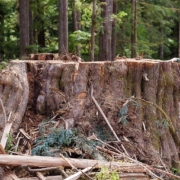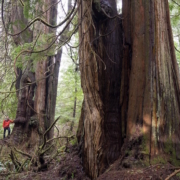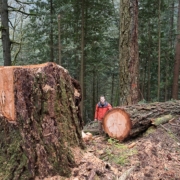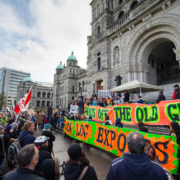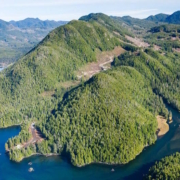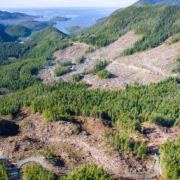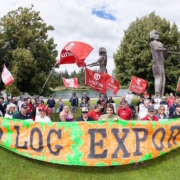Conservation Group Releases Pre-Election Summary of BC’s Political Parties’ Policies on Old-Growth Forests and Forest Policies
VICTORIA – The Ancient Forest Alliance has released a summary of BC’s major political parties’ policy platforms and governance track records (NDP and Liberals) on old-growth forest protection and related forestry issues in BC ahead of the April 9 election.
See the summary infographic and the full analysis here: https://16.52.162.165/2017-provincial-election-summary-bc-party-platforms-on-old-growth-forests-and-related-forestry-issues/
“Forest protection and logging are hot-button topics in many parts of BC, but it’s not always clear where our politicians stand on these issues,” said Ken Wu, the Ancient Forest Alliance’s Executive Director. “We want voters to head to the polls on Tuesday armed with the facts.”
“An informed electorate is key to making democracy work. With the upcoming election, British Columbians have a unique opportunity to influence public policy around the issues that matter, including the health of our forests, wildlife, and watersheds and the creation and retention of sustainable forestry jobs.”
So far, no party has made the protection of old-growth forests a central issue, with the exception of a number of Green Party candidates in certain ridings.
One of the two shining lights of progress that are of interest to the Ancient Forest Alliance is in the Green Party’s forestry platform, where they have committed to identifying and protecting BC’s old-growth forests. Neither the Liberals nor NDP make any mention of old-growth forests in the forestry sections of their platforms.
The other positive light is in the NDP’s environment platform, where they make reference to using the ecosystem-based management approach of the Great Bear Rainforest as a model for old-growth forest management and land use planning in BC. While vague with considerable wriggle room, if interpreted in its strongest, most direct way, such an approach would likely end the logging of old-growth forests across much of the province, such as on Vancouver Island and the southwest mainland where old-growth forests are far more scarce than in the Great Bear Rainforest.
However, the NDP party has not directly stated that they would end old-growth logging anywhere – with the exception of Esquimalt-Metchosin NDP Mitzi Dean, who stated at an all candidates debate recently:
“Within the BC NDP platform we do mention old growth. We are committed to protecting old growth, that is in our platform and we are committed to that. Our strategy around that is that we will use the land planning process to make sure that we will protect old-growth forests. It’s really important to build that plan to protect old-growth forests … Second growth forests will be logged and not old-growth forests and those will be protected …We have it in our platform. We have the intention of protecting old-growth forests. Personally, I am committed to no further old-growth forests being logged as quickly as possible.”
Whether party leader John Horgan will officially commit the party to ending old-growth logging is of interest to the Ancient Forest Alliance.
Alas, the NDP and Liberals’ forestry platforms don’t make mention of old-growth forests and reflect the unsustainable status quo. They both commit to plant more trees, promote more wood construction projects in BC, help expand markets for BC wood, try to get a better softwood lumber deal with the US, and work with forest companies to try to create more jobs. Their forestry platforms state nothing about protecting old-growth forests, restricting raw log exports with specific policies or regulations, or providing incentives for converting old-growth mills for second-growth processing or value-added manufacturing.
As a whole, the NDP’s track record on protecting old-growth forests during their 10 years in power was significantly better than the BC Liberals’ governing track record over 16 years. In that time, the NDP increased protection in BC by 6% systematically across much of the province, while the BC Liberals increased protection by 3%, largely concentrated in the Great Bear Rainforest, Haida Gwaii, and Squamish Nation territory, while refusing any new protected areas across most of the rest of the province.
Besides calling for old-growth protection, the Green platform also proposes tax relief for companies investing in wood manufacturing and speaks of an interest in curbing raw log exports, although fails to propose specific mechanisms. Unlike the BC Liberals and NDP however, the Greens have no governing track record to judge them on.
“In summary, the Greens have the strongest platform for old-growth forests and wood manufacturing jobs, but no governing track record, while the NDP has a stronger platform and track record than the BC Liberals regarding old-growth protection and log exports,” stated Ken Wu.
Court rulings also show that the most important governing body for determining the ultimate fate of BC’s old-growth forests are the province’s diverse First Nations, whose unceded lands encompass most the of BC. The provincial government can facilitate old-growth protection by supporting First Nations’ old-growth conservation plans, like the Tla-o-qui-aht Tribal Parks and the Ahousaht Land Use Vision; providing financial support for sustainable, economic alternatives to old-growth logging in First Nations communities; and by facilitating a shift from old-growth to second-growth forestry policy across BC.
The Ancient Forest Alliance is calling on the BC government to implement comprehensive, science-based legislation to protect BC’s endangered old-growth forests while ensuring a sustainable, value-added second-growth forest industry. Old-growth forests are vital to support endangered species, tourism, the climate, clean water, wild salmon, and many First Nations cultures. About 75% of the original, productive old-growth forests have been logged on BC’s southern coast, including 90% of the valley bottoms with the largest trees and richest biodiversity.
See before and after maps of southwest BC’s old-growth forest cover: https://16.52.162.165/ancient-forests/before-after-old-growth-maps/
See a new time lapse video showing logging activities in southwest BC since European settlement: https://16.52.162.165/news-item.php?ID=1113
See the parties’ election platforms here:
BC Liberal Platform: https://www.bcliberals.com/wp-content/uploads/2017/04/2017-Platform.pdf
NDP Platform: https://action.bcndp.ca/page/-/bcndp/docs/BC-NDP-Platform-2017.pdf
Green Platform: https://d3n8a8pro7vhmx.cloudfront.net/greenpartybc/pages/2300/attachments/original/1493054476/2017-platform-bcgreenparty-print.pdf?1493054476


